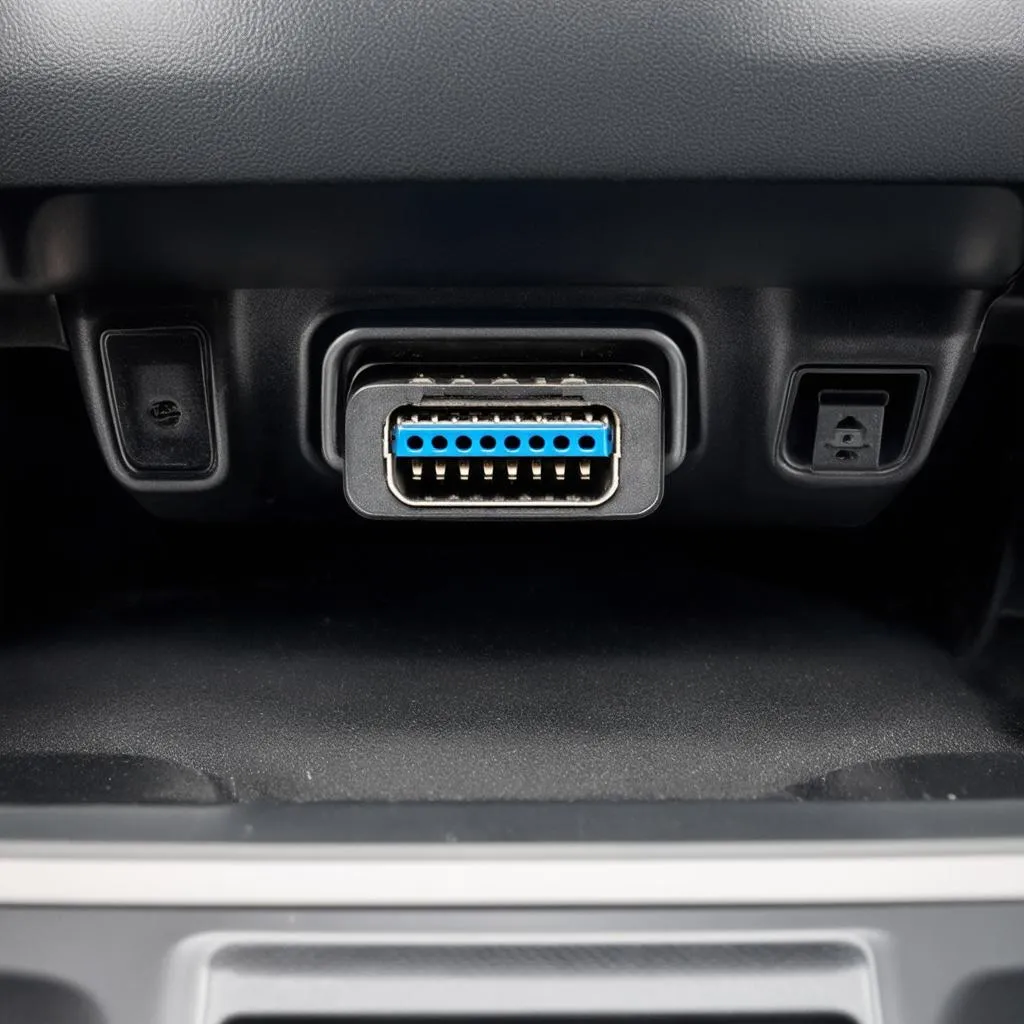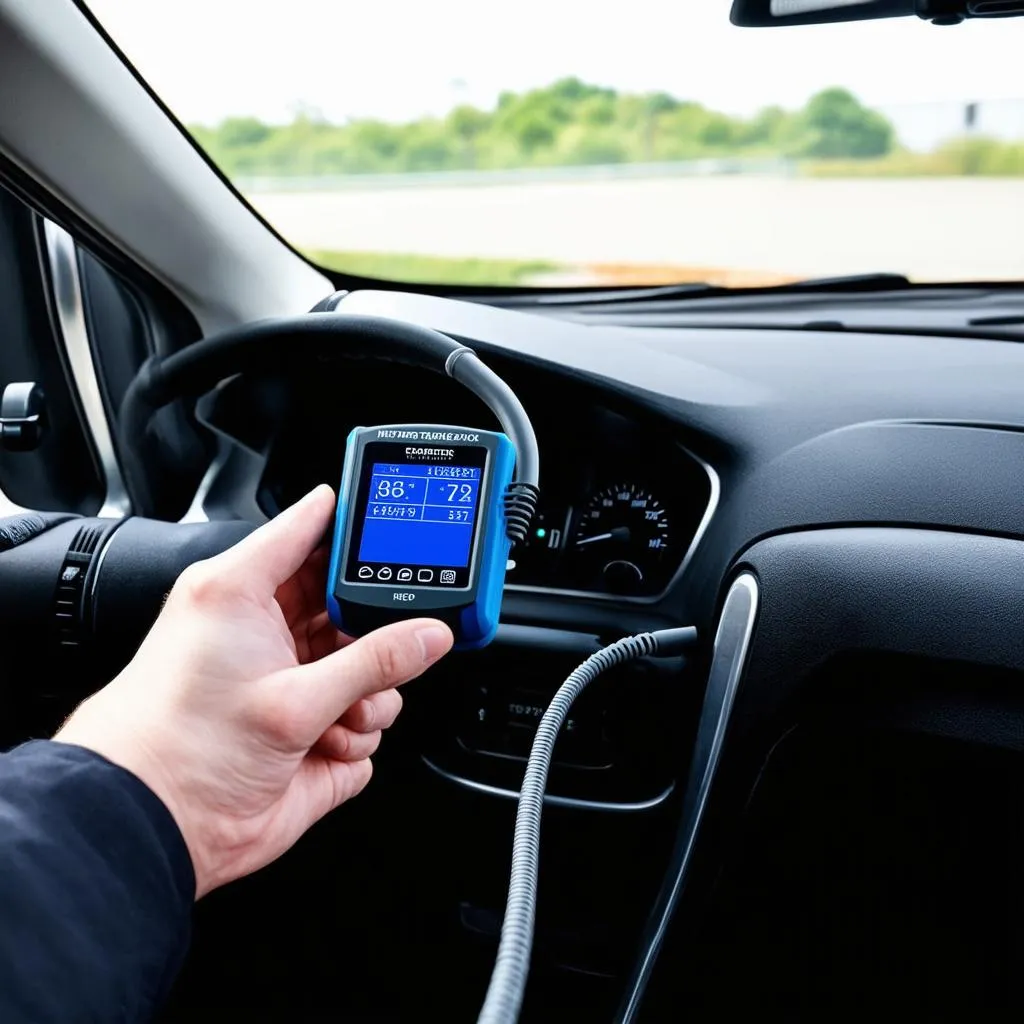Ever had that sinking feeling when your “Check Engine” light pops on, leaving you clueless about what’s wrong with your trusty 2007 Ford F150? We’ve all been there. Before you panic and imagine the worst-case scenario, remember the OBD port is your friend. It’s the gateway to understanding your truck’s internal whispers. This article will guide you step-by-step on how to locate it and decipher what it’s trying to tell you.
Decoding the Mystery: Why is the OBD Port Important?
Think of your F150’s OBD (On-Board Diagnostics) port as a direct line of communication to your truck’s computer system. Just like a doctor uses a stethoscope to listen to your heart, a mechanic uses a scan tool plugged into the OBD port to diagnose problems.
This little port offers a wealth of information about your engine, transmission, emissions system, and more.
Imagine this: You’re on a road trip, and suddenly, your engine starts sputtering. You pull over, worried. Having located your OBD port beforehand, you can quickly connect a portable code reader (easily available online or at auto parts stores) and decipher the error code. This quick action can save you time, money, and a whole lot of worry.
Locating the Elusive 2007 Ford F150 OBD Port
Some say finding the OBD port in certain vehicles is like searching for a hidden treasure. Fortunately, Ford made it fairly straightforward for the 2007 F150:
- Start with the Driver’s Side: Slide into the driver’s seat and look beneath the dashboard on the left-hand side.
- Feel Around the Lower Dash Panel: You’re searching for a trapezoidal-shaped port, about the size of a computer port, usually covered by a small plastic cap.
- Success! You’ve likely found your OBD port. If not, check slightly further under the dash, sometimes it’s tucked away a bit more.
Pro Tip: If you’re still struggling, consult your owner’s manual – they often have diagrams highlighting the OBD port’s location.
 OBD Port Location
OBD Port Location
Beyond the Port: Understanding OBD Scanners and What They Reveal
Now that you’ve found your OBD port, let’s talk about what to do with it. This is where OBD scanners come in. These handy devices plug into your OBD port and communicate with your truck’s computer.
Basic Scanners: These affordable tools can read and clear basic engine codes, giving you a general idea of what might be going wrong.
Advanced Scanners (Like Dealer Scanners for European Cars): For the tech-savvy or professional mechanics, these scanners offer a deeper dive into your vehicle’s systems. They can access manufacturer-specific codes, provide live data streams, and even help program new keys.
Think of it this way: A basic scanner is like a general practitioner, while an advanced scanner is like a specialist who can diagnose and address more complex issues.
What if you own a European car? Don’t worry! We’ve got you covered. Check out our article on Ford Fusion OBD Codes for more information on scanners specifically designed for European vehicles.
 OBD Scanner in Use
OBD Scanner in Use
Feng Shui and Your F150’s OBD Port: A Harmonious Connection?
While not directly related, maintaining your vehicle’s health aligns with the Feng Shui principle of promoting positive energy flow. A well-maintained truck can lead to smoother, more enjoyable journeys, which can, in turn, contribute to a more balanced and harmonious life.
Need Help with Your Ford F150?
We’re here to help! If you’re having trouble locating your OBD port, need advice on which scanner to buy, or require assistance with interpreting error codes, don’t hesitate to contact us on Whatsapp: +84767531508. Our team of auto experts is available 24/7 to provide guidance and support.
Remember, a little knowledge about your vehicle goes a long way. By familiarizing yourself with your 2007 Ford F150’s OBD port and the information it provides, you can take control of your truck’s health and enjoy many miles of worry-free driving.